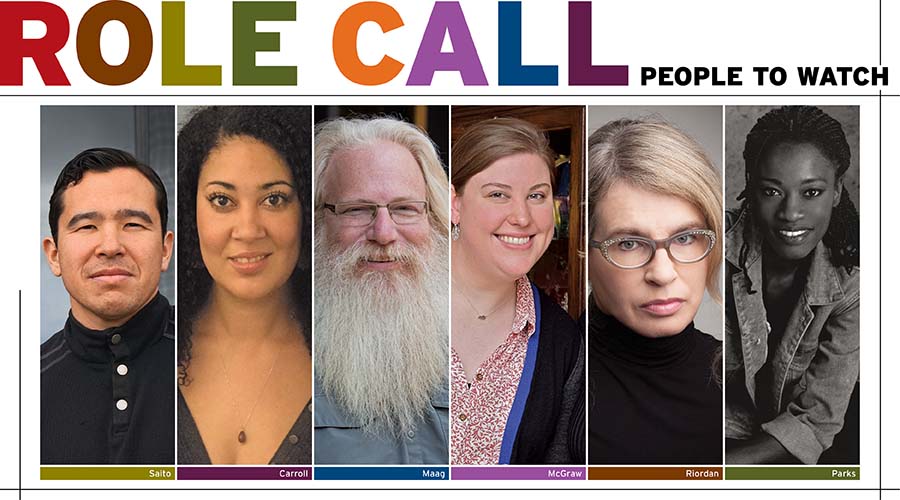Andrew Saito
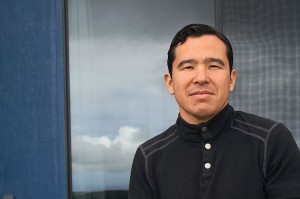
Profession: Playwright
Hometown: Los Angeles
Current home: San Francisco
Known for: Mount Misery: A Comedy of Enhanced Interrogations and Krispy Kritters in the Scarlett Night at Cutting Ball Theater; Stegosaurus (or) Three Cheers for Climate Change! at Faultline Theater.
What’s next: Whisper Fish will run at Bay Area Playwrights Festival, July 15-24. He is currently working on Rabinal with Lakin Valdez, a “radical multidisciplinary retelling of a ritualistic Mayan dance-drama from Guatemala that predates the Spanish invasion,” to tour in 2018.
What makes him special: “Andrew’s writing reminds me of the ‘impossible theatre’ of Federico García Lorca, as well as the novels of William S. Burroughs,” says Rob Melrose, founding artistic director of Cutting Ball, where Saito was the Andrew W. Mellon resident playwright from 2013 to last February. “They are richly poetic, strange, and dreamlike. He writes from his subconscious and has a deep love of language. He is fearless and has no qualms about putting the most extreme things onstage.”
His aesthetic: “I try to make each play radically different in terms of form, content, and language,” Saito explains. “I’ve written two-handers and epics with large casts.” What ties it all together, he says, is a “global aesthetic,” stemming from his travels abroad: He was a Fulbright Fellow in Papua New Guinea, and he’s worked with the Latin American theatre groups Yuyachkani and Kusiwasi. “I think it’s important to be in conversation with the wider world, with what’s come before, and with what is to follow. I want to see an American theatre that is more porous with the rest of the world, with more sustained exchange and collaboration. Much of the best theatre I’ve ever seen is from Europe or Latin America.”
Jade King Carroll

Profession: Director
Hometown: Woodstock, N.Y.
Current home: New York City
Known for: Emily Mann’s Having Our Say, coproduced by Connecticut’s Hartford Stage and Long Wharf Theatre, and August Wilson’s The Piano Lesson at New Jersey’s McCarter Theatre Center, both in 2016; Dominique Morisseau’s Sunset Baby at Pittsburgh’s City Theatre in 2015.
What’s next: Aurin Squire’s Running on Fire at the O’Neill Theater Center’s National Playwrights Conference in Connecticut, July 6-7, and another iteration of The Piano Lesson at Hartford Stage, Oct. 13-Nov. 13.
What makes her special: “Jade is an extraordinary talent,” states McCarter artistic director Mann, who says that Carroll’s 2010 A Raisin in the Sun at Juilliard “made a lasting impression on me, and is one of the best productions of that play I have ever seen.” Mann enthuses that Carroll’s “range is incredible—not only has she become a sought-after director of August Wilson’s Century Cycle; she is a tremendous champion of new work.” Mann adds, “It has been a joy watching Jade grow as an artist, and now I revel in having her as a colleague.”
Why theatre: During the first decade of Carroll’s life, her father, Baikida Carroll, worked with Mann and Ntozake Shange on the musical Betsey Brown, and young Jade nurtured childhood dreams of becoming a choreographer. Then at age 10, she decided to become a director after seeing Mann’s 1991 production of The Glass Menagerie. “My love of language I got from my mother, Janice King, who is a poet, bookseller, and creative-writing teacher,” Caroll notes. “She told me that anything I read I could own—I don’t think she expected me to take it quite so literally.” Carroll adds, “I could happily spend 18 hours every day in a theatre!”
Michael Maag

Profession: Lighting designer
Hometown: St. Louis
Current home: Ashland, Ore.
Known for: Currently the lighting and video department manager for the Oregon Shakepeare Festival, Maag has been lighting and video artist for Sonoluminescence, master electrician for Seattle Repertory Theatre, lighting supervisor at the Utah Shakespeare Festival, planetarium engineer for JHE, and technical director at Florida Studio Theatre.
What’s next: Maag just focused his repertory light plot for OSF’s Allen Elizabethan Theatre, and he’s working on a fiber-optic dress for The Winter’s Tale, pyrotechnics and LED wearables for The Wiz, and various electronic projects for a heavy-metal production of Hamlet. Outside of OSF he’s designing lighting and video projections for Descent: Kinetic Light with dancers Alice Sheppard and Laurel Lawson, who also augment their movement with wheelchairs.
What makes him special: Maag has been “a mentor and inspiration to years and years of OSF FAIR fellows and interns and assistants,” says lighting designer Porsche McGovern, the 2010 Richard L. Hay Design fellow in OSF’s internship/fellowship program. “He’s still my go-to on questions about not just lighting but the ethics and politics of being in the theatre lighting business. I can never thank him enough for all he’s done for me.”
Beginning to see the light: After studying lighting design at the University of Northern Colorado with William Van Loo, Maag “jumped right out into the field,” at first finding work mostly as an electrician and board operator, “so I kept my eyes open and studied the designers I worked for,” and took any lighting design gigs he could find: “events, industrials, even a Girl Scout convention.” His career has moved on both tracks ever since. As he puts it, “Having the technical knowledge makes me a more effective and efficient designer, and having the design knowledge makes me a more artistic technician and programmer.”
Molly McGraw
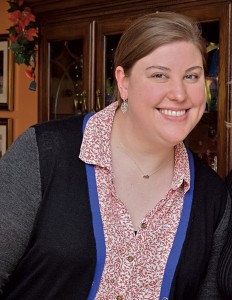
Profession: Stage manager
Hometown: Dayton, Ky.
Current home: Los Angeles
Known for: She was production stage manager for A Walk in the Woods at Long Beach, Calif.’s International City Theatre and assistant stage manager for Everything You Touch at the Theatre @ Boston Court in 2014—a show with 420 lighting cues, 220 sound cues, and 120 costume changes. She mentors stage management students at the University of Southern California, her alma mater.
What’s next: She’ll serve as production stage manager for Vanya and Sonia and Masha and Spike at ICT, June 8-July 3, and for Bars and Measures at the Theatre @ Boston Court, Sept. 24-Oct. 23. In November she’ll work with the Ghost Road Company on Asterion at the Getty Villa in Pacific Palisades, Calif.
What makes her special: “The directors love her, the actors love her, and the designers love her,” says Elsbeth Collins, director of production and associate professor at the University of Southern California. “She makes the P.M.’s job easy by knowing where to go when questions arise and solving many of them herself. She practices autonomy 90 percent of the time, while never crossing the line to make decisions that are not hers to make. The other 10 percent of the time, she plays well with others in this collaborative thing we call making theatre.”
On taking her job home: Clearly McGraw has the most crucial stage-management gene: the one for organization. As she explains, “Every item in my house has its place, and I am never running around frantically looking for my lost keys—they are right where they belong, of course, on the key dish on the side table,” she says. “And never is there a mismatched pair of socks or a messy kitchen cabinet—even the junk drawer has order.”
Rose Riordan
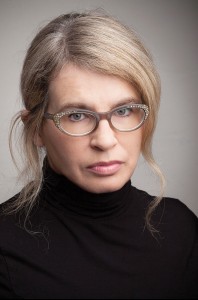
Profession: Associate artistic director, Portland Center Stage
Hometown: Chugiak, Alaska
Current home: Portland, Ore.
Known for: Programming PCS’s new-play festival, JAW (Just Add Water), every July since 1999.
What’s next: This year’s JAW, July 29-31. “I always look forward to it,” says Riordan. “It’s such a rewarding, inspiring time of year. It’s in the second half of July, so no rain and lots of fun.”
What makes her special: Playwright Dan O’Brien (The Body of an American) met Riordan doing JAW and admired how she channeled audience responses in a way that was helpful for playwrights. O’Brien calls her “a fiercely intelligent advocate for provocative new work, as well as a first-rate director. She also has daring, bold choices in material—often political, always substantive, theatrical, and joyful.” To illustrate, O’Brien cites a commission he got from Riordan to write an experimental, percussion-based musical about Sasquatch and cancer. That “tells you a lot about her daring and trust.”
An early bloomer: Riordan started making shows when she was little, but she’s not sure she thought of it as theatre. “‘Grocery store’ was one elaborate plot I used to play—so much human behavior to examine, plus food,” she recalls. “I wrote, produced, directed, and starred in my first full-length play in the fifth grade, about six stewardesses and their ‘man troubles.’ I was clearly an advanced thinker.”
Sonja Parks
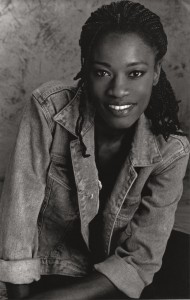
Profession: Actor/activist
Hometown: Austin
Current home: Divided between Minneapolis and San Antonio, Texas
Known for: As she puts it, “For being able to play a 12-year-old even though I’m not 12” in such multicharacter solo shows as Seedfolks or Nilaja Sun’s No Child… With Sharon Bridgforth she’s created a number of “theatrical jazz” pieces, including River See. “The spoken words come through me, there are two dancers and two vocalists onstage, and Sharon is what is called the composer,” she says of the form.
What’s next: A project to codify a “performance language” around theatrical jazz, a term first coined by artist/scholar Omi Osun Joni L. Jones, so that actors can learn it the way they train in commedia or Viewpoints. She sums up the theatrical jazz ethos: “There’s really no right or wrong, only what is ready to happen in the space right now. We call it the ‘what will.’”
What makes her special: Bridgforth, a collaborator for more than 20 years, raves about Parks’s “voracious love of text” and “infinite flow of ideas and approaches,” calling Parks “a lightning rod for manifesting magic onstage, which organically opens space for all present to be moved by and with her characters and the worlds they inhabit.” Elissa Adams, director of new-play development at Minneapolis’s Children’s Theatre Company, says she’s seen Parks “play such a wide variety of characters—young, old, innocent, powerful, wily, coquettish. She is able to inhabit them all so fully, and yet she’s not the kind of actor who disappears inside a role. There is a fierceness and a purity, like some kind of core of precious metal, that is always present and that is all Sonja.”
What she’s thinking about now: After some disillusionment with the professional theatre, Parks was inspired by National Black Theatre founder Barbara Ann Teer, who showed her that her work is “not just art for art’s sake; we’re actually channeling vast lineages of history, the oral tradition of our ancestors.” Her work is now “much more about how I serve the art rather than how the art serves me. How do I use this to help young artists of color shape the society they want?”

